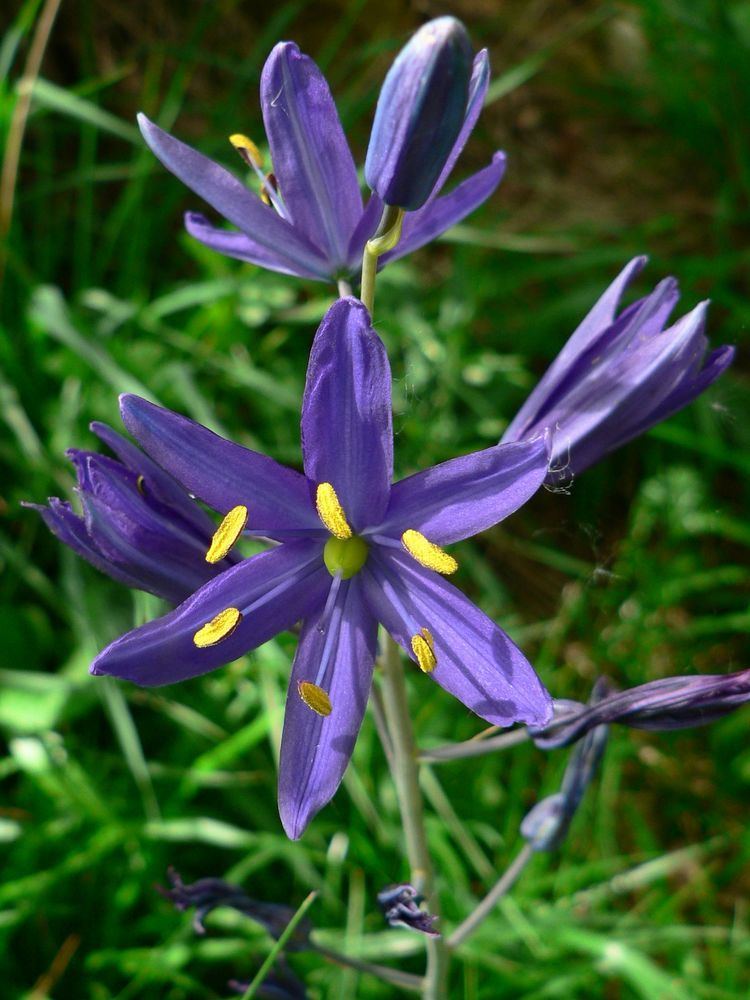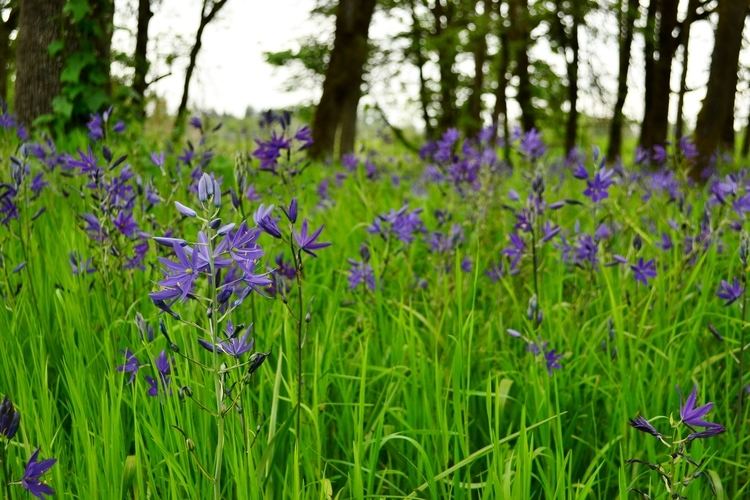Clade Monocots Rank Species | Clade Angiosperms Subfamily Agavoideae Higher classification Camas | |
 | ||
Similar Camas, Camassia leichtlinii, Ixiolirion, Narcissus triandrus, Tulipa kaufmanniana | ||
Common camas camassia quamash william l finley national wildlife refuge oregon
Camassia quamash, commonly known as camas, small camas, common camas, common camash or quamash, is a perennial herb. It is one species of the genus Camassia and is native to western North America in large areas of southern Canada and the northwestern United States, from British Columbia and Alberta to California and east from Washington state to Montana and Wyoming.
Contents
- Common camas camassia quamash william l finley national wildlife refuge oregon
- Growth pattern
- Leaves stems and roots
- Inflorescence and fruit
- Taxonomy
- Synonyms
- Etymology
- Distribution and habitat
- Cultivation
- Uses
- Food use
- References

Growth pattern
It is a perennial herbaceous monocot with leaves emerging from a persistent bulb in a basal rosette.
Leaves, stems, and roots

The stems have a length between 30 and 90 centimetres (12 and 35 in). The leaves are basal and have a grass-like appearance.
Inflorescence and fruit

The pale blue to deep blue flowers appear in late spring to early summer (May to June in their native habitat). They are arranged in a raceme at the end of the stem. Each of the radially symmetrical, star-shaped flowers has six petals.
Taxonomy
There are eight subspecies;

Synonyms

The superseded name for Camassia quamash supsp. quamash, Camassia esculenta (Nutt.) Lindl., should not be confused with the superseded name Camassia esculenta (Ker Gawl.) B.L.Rob., (nom. illeg.) for Camassia scilloides.
Etymology
The genus name comes from the Nez Perce Indian name for this plant, and means "sweet". Qém’es, a term for the plant's bulb, which was gathered and used as a food source by tribes in the Pacific Northwest, and were an important food source for the Lewis and Clark Expedition (1804–1806). The bulbs were harvested and pit-roasted or boiled by women of the Nez Perce, Cree, and Blackfoot tribes.
Distribution and habitat
Though the once-immense spreads of camas lands have diminished because of modern developments and agriculture, numerous camas prairies and marshes may still be seen today. In the Great Basin, expanded settlement by whites accompanied by turning cattle and hogs onto camas prairies greatly diminished food available to native tribes and increased tension between Native Americans and settlers and travelers. Both the Bannock and Nez Perce Wars began after Nez Perce became incensed at the failure of the US government to uphold treaties, and at settlers who plowed up their camas prairies, which they depended on for subsistence.
Cultivation
This bulbflower naturalizes well in gardens. The bulb grows best in well-drained soil high in humus. It will grow in lightly shaded forest areas and on rocky outcrops as well as in open meadows or prairies. Additionally it is found growing alongside streams and rivers. The plants may be divided in autumn after the leaves have withered. Additionally the plant spreads by seed rather than by runners.
Uses
Camas is not just an edible plant, it is also grown as an ornamental plant. Even in the wild, large numbers of camas can color an entire meadow blue-violet.
Food use
While the bulbs of Camassia species are edible and nutritious, the white-flowered meadow death-camas (which is not in Camassia, but part of the genus Toxicoscordion that grows in the same areas) is toxic, and the bulbs are difficult to distinguish.
Camas has been a food source for many native peoples in the western United States and Canada. After being harvested in the autumn, once the flowers have withered, the bulbs are pit-roasted or boiled. A pit-cooked camas bulb looks and tastes something like baked sweet potato, but sweeter, and with more crystalline fibers due to the presence of inulin in the bulbs - an oligosaccharide responsible for the copious flatulence caused by excessive consumption or consumption of undercooked bulbs. People have also dried the bulbs to then be pounded into flour. Native American tribes who ate camas include the Nez Perce, Cree, Coast Salish, Lummi, and Blackfoot tribes, among many others. Camas bulbs contributed to the survival of members of the expedition of Lewis and Clark (1804–06).
